Tibet Train Scenery: What to Expect on the Tibet Train Journey in Different Seasons?
For travelers seeking a scenic journey to transition from inland China to the “Roof of the World”, taking a Tibet train is undoubtedly the best choice. Since weather and temperatures vary by season, the scenery along the route also changes with each time of year. So, what does the scenery look like in different seasons?
In this guide, we’ll take you through the scenery along the Qinghai-Tibet Railway across all four seasons—from spring blossoms and summer’s clear lakes to autumn’s golden foliage and winter’s snowy plateaus. Read on to discover the best time to take the Tibet train based on your preferences.
CONTENT
Why Take the Tibet Train? Experience the World-class Scenic Qinghai-Tibet Railway
As the highest railway in the world, the Qinghai-Tibet Railway is not just a transportation route but an engineering marvel and a scenic masterpiece. Spanning over 1,956 kilometers from Xining to Lhasa, the train route offers an unparalleled experience for travelers to witness diverse landscapes—from vast grasslands and clear lakes to snow-capped mountains and desert plains.
In addition to the scenic immersion, taking a Tibet train can offer you other advantages. For example, the train’s slow ascent helps your body adjust to the high altitude, reducing the risk of altitude sickness. Also, there will be many local people on the train so that you can interact with them and learn more about Tibet.
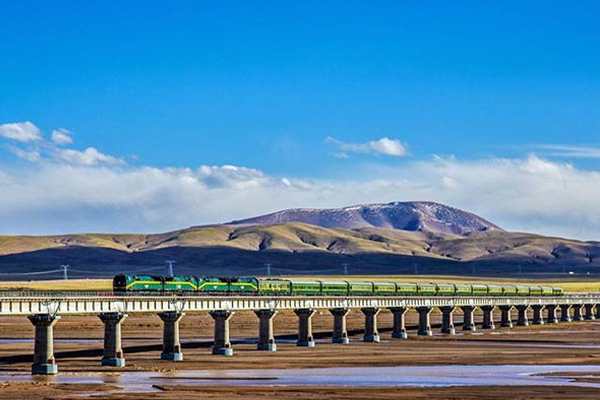 The Qinghai-Tibet Railway is the highest railway in the world, with world-class scenery along the route.
The Qinghai-Tibet Railway is the highest railway in the world, with world-class scenery along the route.Tibet Train Scenery in Spring: Witness Blooming Landscapes and Snow-Capped Peaks
Though spring (March to May) is not Tibet’s peak travel season, many tourists choose to travel during this time, as it gets warmer and becomes more comfortable. As the train departs Xining and travels westward, passengers can witness scenery of sharp contrast—they can see both blooming flowers and snow-capped mountains along the way.
On the way to Lhasa, the Tibet train will pass through the largest saltwater lake in China—Qinghai Lake. The lake starts to thaw in spring, so you can see its turquoise water, which reflects the snow-capped Qilian Mountains. In late April, grass and various wildflowers begin to appear, adding splashes of color to the landscape.
As the train climbs to higher altitudes and approaches Golmud, distant snow-covered peaks form a striking backdrop that contrasts vividly with the gradually greening plains. Around the wetlands and lakes, flocks of migratory birds are often seen, marking the revival of life on the plateau. The interplay of melting snow, shimmering lake water, and budding vegetation paints a scene that is both serene and full of vitality. This is the unique charm of this transitional time of year.
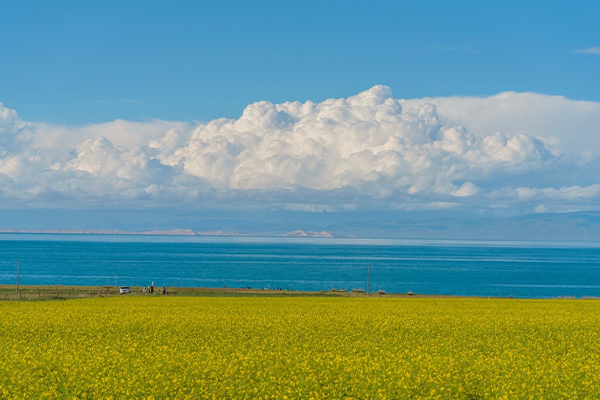 When taking the Tibet train in spring, you can see the turquoise waters of Qinghai Lake.
When taking the Tibet train in spring, you can see the turquoise waters of Qinghai Lake.Tibet Train Scenery in Summer: Embrace Crystal-clear Lakes and Majestic Mountains
Summer (June to August) is the peak season to take a Tibet train tour, as it enjoys vibrant landscapes and the most favorable weather of the year. In summer, Tibet’s landscapes are at their most lush, with verdant grasslands stretching endlessly, dotted with nomadic tents and herds of sheep and yaks. If you are lucky, you may catch a glimpse of Tibetan antelopes or other wildlife species as the train passes through the Hoh Xil Nature Reserve.
Although temperatures rise in summer, high-altitude mountain ranges like the Kunlun, Tanggula, and Nyenchen Tanglha mountains still retain some snow, offering you a magnificent view of "snow-capped peaks surrounded by vast grasslands." This combination of snow, grasslands, and wide-open skies creates an unforgettable atmosphere, offering travelers a rare glimpse of Tibet’s majestic, untamed beauty during the summer months.
Note: Tibet Train tickets can sell out quickly in the summer, so if you plan to travel during this season, it’s a good idea to contact us at least 15 days before your departure to book your tickets in advance.
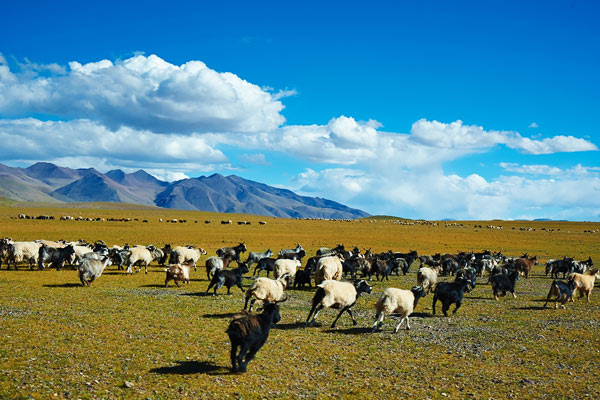 You may glimpse herds of animals grazing on the grasslands as the train passes through Hoh Xil.
You may glimpse herds of animals grazing on the grasslands as the train passes through Hoh Xil.Tibet Train Scenery in Autumn: Admire Golden Plateaus and Clear Blue Skies
Autumn (September to November) is widely regarded as one of the best times to visit Tibet, thanks to its stable weather and stunning natural colors. As the monsoon ends, the air in Tibet becomes crystal clear, enhancing the beauty of the landscape. When you look up, the sky is a vibrant, crisp blue, offering tourists excellent visibility for miles.
Autumn in Tibet is like a vibrant painting, with trees in the valleys turning shades of yellow, red, and orange. At the same time, most of the grasslands take on a golden hue. Overall, Tibet’s autumn is undoubtedly a visual feast.
Autumn also brings an increase in wildlife sightings. As animals like Tibetan wild donkeys and antelope prepare for the coming winter, they can often be seen grazing or roaming across the vast plains.
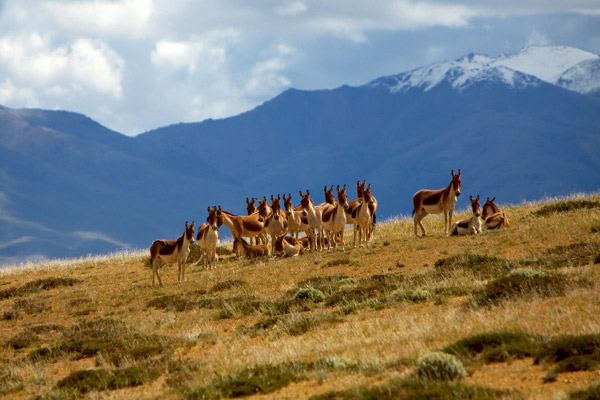 Animals like Tibetan wild donkeys can often be seen across the vast plains.
Animals like Tibetan wild donkeys can often be seen across the vast plains.Tibet Train Scenery in Winter: Explore a Snowy Wonderland with Quiet Peace
Winter (December-February) is the least crowded season, yet it holds a unique charm and serene beauty that makes it a hidden gem for those willing to brave the cold. During the winter months, Tibet is covered in a blanket of snow, transforming the landscape into a peaceful, quiet wonderland.
As you travel by train, you'll pass frozen rivers and lakes that glisten in the sunlight, creating a breathtaking spectacle. The snow stretches across the land, forming white landscapes that seem endless, especially in the Tanggula Mountains and the northern plateau. For tourists who love photography, snow-covered landscapes and crisp light in winter offer unique conditions for capturing stunning photos.
The snow-covered landscapes of Tibet are far from dull; instead, they have a unique liveliness. Traditional nomadic tents stand resiliently in the snow, while the small prayer flags add just the right touch of color to the pristine white world.
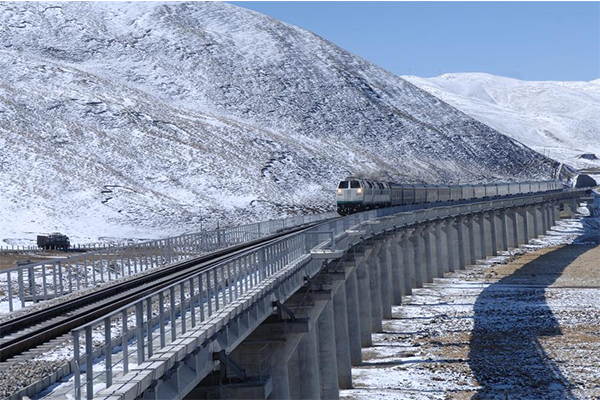 A Tibet train passes through the magnificent winter scenery with snow-covered mountains.
A Tibet train passes through the magnificent winter scenery with snow-covered mountains.Practical Tips to Enjoy Tibet Train Scenery Comfortably in Each Season
Choose the Right Seat or Sleeper
Among the three types of tickets, soft sleepers offer more comfort, privacy, and better window views. In every sleeper cabin, the lower bunks have easier access to the windows. Therefore, the most comfortable and scenic spot on a Tibet train is the lower berth in the soft sleeper cabin.
Prepare for High Altitude
All Tibet trains are equipped with oxygen supply systems, but mild symptoms of altitude sickness may still occur. Before embarking on your journey, consult your doctor and bring along some medications for prevention. It is also advisable to stay hydrated, avoid alcohol, and get plenty of rest during the journey.
Bring Warm Clothing
No matter which season you choose to travel to Tibet by train, warm clothing is essential, as the train passes through high-altitude regions where temperatures can fluctuate unpredictably. Even in summer, the temperatures at night can drop quite low. Therefore, consider packing T-shirts, thermal shirts, light sweaters, and a down jacket.
Conclusion
Traveling to Tibet by train is more than just transportation—it’s a spiritual and scenic experience that immerses you in the ever-changing beauty of the Tibetan Plateau. Each season along the Qinghai-Tibet Railway offers its own stunning landscapes, allowing you to choose your travel time based on the type of experience you seek.
If you want to learn more about the Tibet train scenery or need assistance with your Tibet trip, don't hesitate to contact us. We’ll be happy to help!
Related Readings:
Recommended Tibet Train Small Group Tour Packages
-
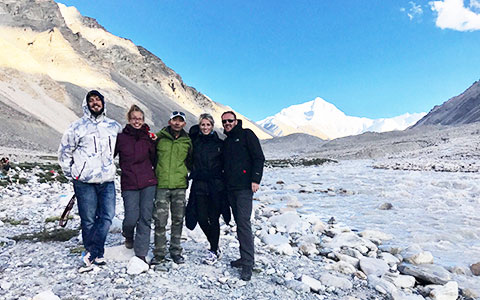 HOT9 Days Lhasa to Everest Base Camp Small Group Train Tour
HOT9 Days Lhasa to Everest Base Camp Small Group Train TourTibet train (from Xining) - Lhasa - Yamdrok Lake - Gyantse - Shigatse - Everest Base Camp - Dinggye - Sakya - Shigatse - Lhasa
Only From: USD1035
View Details -
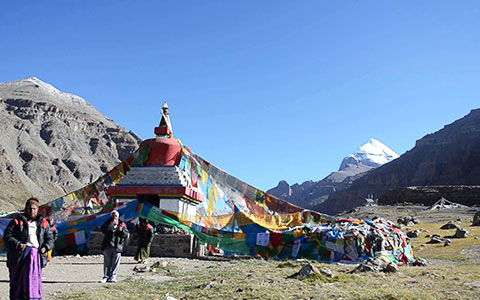 HOT16 Days Kailash and Manasarova Small Group Tour by Tibet Train
HOT16 Days Kailash and Manasarova Small Group Tour by Tibet TrainTibet train (from Xining) - Lhasa - Gyantse - Shigatse - EBC - Saga - Lake Manasarovar - 3 Days Kailash Trek - Saga - Shigatse - Lhasa
Only From: USD2136
View Details -
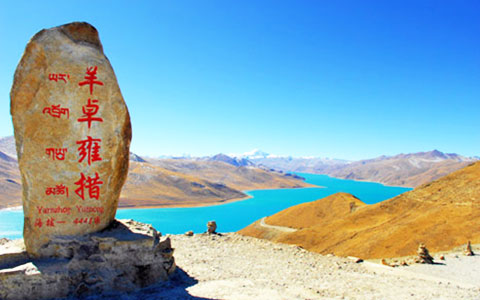 HOT6 Days Lhasa and Yamdrok Lake Small Group Tour with Tibet Train Experience
HOT6 Days Lhasa and Yamdrok Lake Small Group Tour with Tibet Train ExperienceTibet train (from Xining) - Lhasa - Yamdrok Lake - Lhasa
Only From: USD779
View Details -
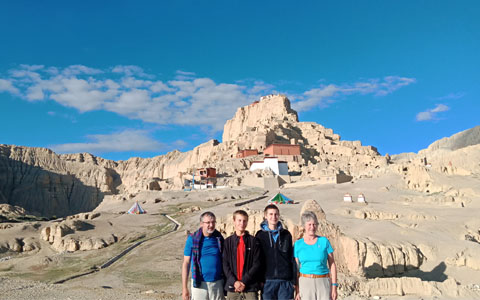 HOT18 Days EBC Kailash and Guge Kingdom Tour with Tibet Train Experience
HOT18 Days EBC Kailash and Guge Kingdom Tour with Tibet Train ExperienceTibet train (from Xining) - Lhasa - Gyantse - Shigatse - EBC - Saga - Darchen - Zanda - Kailash Trek - Darchen - Saga - Gyirong - Tingri - Lhasa
Only From: USD2285
View Details
 BACK
BACK
0 Comment ON "Tibet Train Scenery: What to Expect on the Tibet Train Journey in Different Seasons?"